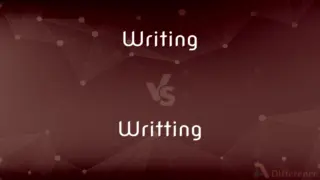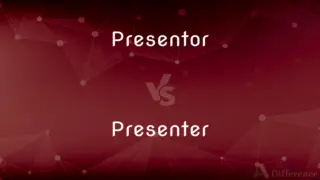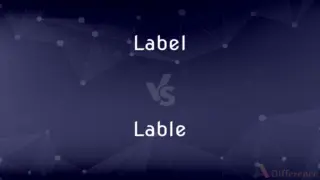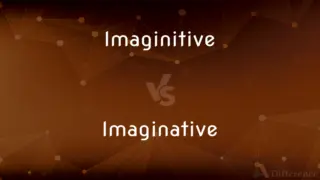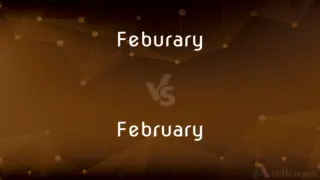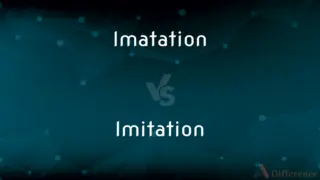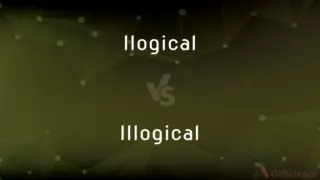Tomatos vs. Tomatoes — Which is Correct Spelling?
Edited by Tayyaba Rehman — By Fiza Rafique — Updated on March 20, 2024
"Tomatos" is incorrect. The correct spelling is "Tomatoes," which are the red or yellowish fruit of the nightshade plant.

Table of Contents
Which is correct: Tomatos or Tomatoes
How to spell Tomatoes?

Tomatos
Incorrect Spelling

Tomatoes
Correct Spelling
ADVERTISEMENT
Key Differences
Think of the word "potatoes" which also ends in "-oes."
Remember "toe" as in feet; tomatoes have "toes."
Envision the shape of a tomato: it looks like an "o" but when many gather, they have multiple "toes."
Connect it with other words that end with "-o" in singular and "-oes" in plural, like "heroes."
Singular "tomato" loses the "o" and gains "-oes" for plural.
ADVERTISEMENT
How Do You Spell Tomatoes Correctly?
Incorrect: The recipe calls for two chopped tomatos.
Correct: The recipe calls for two chopped tomatoes.
Incorrect: I need to buy some tomatos for the salad.
Correct: I need to buy some tomatoes for the salad.
Incorrect: How many tomatos do you need?
Correct: How many tomatoes do you need?
Incorrect: Can you pass the tomatos, please?
Correct: Can you pass the tomatoes, please?
Incorrect: She grows tomatos in her garden.
Correct: She grows tomatoes in her garden.
Tomatoes Definitions
A red or yellowish fruit with a juicy pulp.
She sliced fresh tomatoes for the salad.
Plants native to western South America.
The garden has a section dedicated to tomatoes.
Used in various cuisines worldwide.
She added tomatoes to the curry for tanginess.
A source of lycopene, an antioxidant.
Tomatoes can be beneficial for skin health.
Edible fruits of the plant Solanum lycopersicum.
Tomatoes are a key ingredient in marinara sauce.
A widely cultivated plant (Solanum lycopersicum syn. Lycopersicon esculentum)in the nightshade family, having edible, fleshy, usually red fruit. The tomato is native to and was first domesticated in northern South America.
The fruit of this plant.
Plural of tomato
Tomatoes Meaning in a Sentence
Tomatoes are a key ingredient in Italian cuisine.
Heirloom tomatoes come in various colors and flavors.
Adding tomatoes to a sandwich can make it juicier.
Fresh tomatoes taste the best in salads.
Cherry tomatoes are perfect for snacking.
Tomatoes are rich in vitamins C and K.
Sliced tomatoes and mozzarella make a simple appetizer.
Tomatoes and basil are a classic flavor combination.
Tomatoes are technically a fruit, but often used as a vegetable.
Roasting tomatoes can enhance their flavor.
Freezing tomatoes is a way to preserve their freshness.
Garden-grown tomatoes often taste better than store-bought ones.
Tomatoes should be stored at room temperature for the best taste.
Blanching tomatoes makes them easier to peel.
Cooked tomatoes release lycopene, beneficial for heart health.
Stuffed tomatoes can be a delicious vegetarian dish.
Green tomatoes can be fried for a crispy snack.
Tomatoes are a staple in Mexican salsas.
Sun-dried tomatoes add a burst of flavor to pasta dishes.
Gazpacho is a cold soup made from raw tomatoes.
Growing tomatoes in containers is possible with the right care.
Tomatoes Idioms & Phrases
Throw tomatoes at
To show disapproval or dissatisfaction, traditionally by throwing tomatoes at a performer.
The audience was so disappointed that they wanted to throw tomatoes at the screen.
Common Curiosities
What is the pronunciation of Tomatoes?
tuh-MAY-tohz.
What is the root word of Tomatoes?
"Tomato."
Why is it called Tomatoes?
From the Spanish "tomate," derived from Nahuatl (Aztecan) "tomatl."
Which preposition is used with Tomatoes?
"of" as in "slices of tomatoes."
Which conjunction is used with Tomatoes?
Standard conjunctions like "and" or "or" can be used.
What is the verb form of Tomatoes?
Tomatoes is a noun, not a verb.
What is the singular form of Tomatoes?
"Tomato."
Is Tomatoes an adverb?
No.
Is Tomatoes an abstract noun?
No.
Which vowel is used before Tomatoes?
"a" as in "a basket of tomatoes."
Is Tomatoes a noun or adjective?
Noun.
What is the plural form of Tomatoes?
"Tomatoes."
Which article is used with Tomatoes?
"the" or "a/an" depending on context.
Is the word Tomatoes a gerund?
No.
What is the first form of Tomatoes?
Not applicable as "tomatoes" is a noun.
Is Tomatoes a negative or positive word?
Neutral.
Is the Tomatoes term a metaphor?
No, but it can be used metaphorically in expressions like "tomato face."
What is the opposite of Tomatoes?
There isn't a direct opposite.
How many syllables are in Tomatoes?
Three syllables.
How do we divide Tomatoes into syllables?
To-ma-toes.
What part of speech is Tomatoes?
Noun.
What is another term for Tomatoes?
Solanum lycopersicum (scientific name).
Is Tomatoes a vowel or consonant?
"Tomatoes" is a word containing both vowels and consonants.
Is Tomatoes a countable noun?
Yes.
Is Tomatoes a collective noun?
No.
Is the word Tomatoes imperative?
No.
Is the word “Tomatoes” a Direct object or an Indirect object?
Can be used as a direct object, as in "She picked the tomatoes."
What is a stressed syllable in Tomatoes?
The second syllable "ma."
Which determiner is used with Tomatoes?
Determiners like "these," "those," "my," etc., can be used based on context.
How is Tomatoes used in a sentence?
"The salad was garnished with fresh tomatoes and basil."
Share Your Discovery

Previous Comparison
Cacoon vs. Cocoon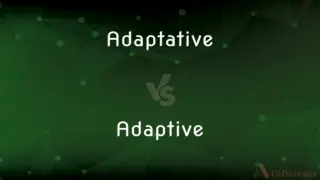
Next Comparison
Adaptative vs. AdaptiveAuthor Spotlight
Written by
Fiza RafiqueFiza Rafique is a skilled content writer at AskDifference.com, where she meticulously refines and enhances written pieces. Drawing from her vast editorial expertise, Fiza ensures clarity, accuracy, and precision in every article. Passionate about language, she continually seeks to elevate the quality of content for readers worldwide.
Edited by
Tayyaba RehmanTayyaba Rehman is a distinguished writer, currently serving as a primary contributor to askdifference.com. As a researcher in semantics and etymology, Tayyaba's passion for the complexity of languages and their distinctions has found a perfect home on the platform. Tayyaba delves into the intricacies of language, distinguishing between commonly confused words and phrases, thereby providing clarity for readers worldwide.














